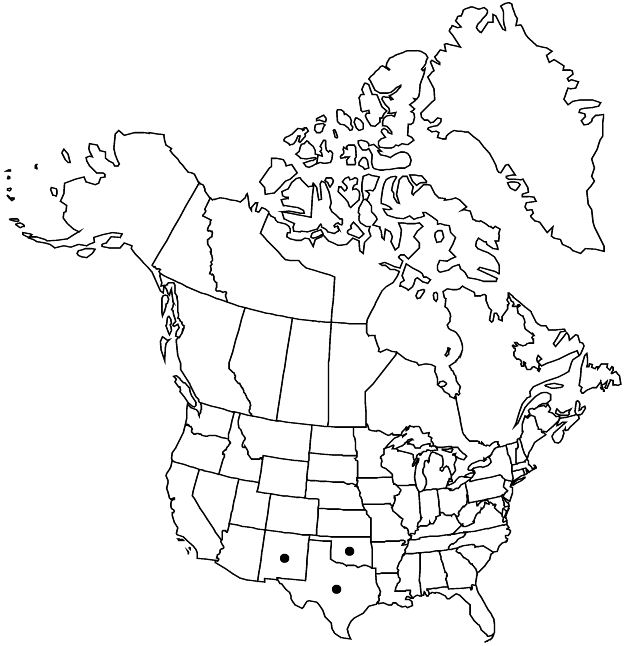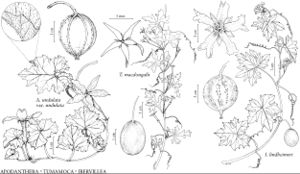Ibervillea lindheimeri
Erythea 3: 75. 1895.
Common names: Lindheimer’s globeberry
Selected by author to be illustrated
Basionym: Sicydium lindheimeri A. Gray Boston J. Nat. Hist. 6: 194. 1850
Synonyms: Ibervillea tenella (Naudin) Small I. tripartita (Naudin) Greene Maximowiczia lindheimeri (A. Gray) Cogniaux
Treatment appears in FNA Volume 6. Treatment on page 31.
Revision as of 20:15, 24 September 2019 by FNA>Volume Importer
Stems to 3 m, not glaucous. Leaves: petiole 1–3.5 cm; blade usually deeply palmately 5-lobed or pedately 3-lobed, rarely ± unlobed, 6–12 cm wide, often slightly succulent, lobes cuneate to flabellate or rhombic-ovate, 10–25 mm wide, surfaces glabrous or sparsely scabridulous. Inflorescences: staminate flowers usually 4–12(–24) in racemes or terminal corymboid clusters 1–3 cm, rarely solitary. Petals 5–7 mm. Fruits dark orange to red, globose to ellipsoid, 2–3.5 cm. Seeds 6–14(–18), 4–6 mm. 2n = 22, 24.
Phenology: Flowering Apr–Jul.
Habitat: Thickets, dry woodlands, fencerows, dunes and mudflats, prairies, mesquite, thorn shrublands, hackberry woodlands, scrub oak, oak-juniper, juniper, and oak-hickory woodlands
Elevation: 0–400(–900) m
Distribution

N.Mex., Okla., Tex., Mexico (Coahuila, San Luis Potosí).
Discussion
Selected References
None.
Lower Taxa
None.
... more about "Ibervillea lindheimeri"
Lindheimer’s globeberry +
Thickets, dry woodlands, fencerows, dunes and mudflats, prairies, mesquite, thorn shrublands, hackberry woodlands, scrub oak, oak-juniper, juniper, and oak-hickory woodlands +
Present +
Erythea +
1895 +
Selected by author to be illustrated +
Ibervillea lindheimeri +
Ibervillea +
species +
